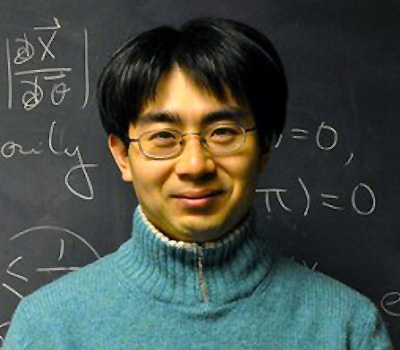Computational simulations help scientists understand biological mechanisms
Electrical currents are passing through our bodies constantly; they direct the functioning of many organs and systems including the heart, brain, muscles, sensory systems, and hormonal glands. Dr. Yoichiro Mori, of the University of Minnesota, is a mathematical physiologist that hopes to bring the power and the beauty of mathematics to bear on the complex, fascinating, and important problems in physiology and medicine, especially in electrophysiology. His current research in cortical spreading depression in the brain and cardiac arrhythmias in the heart has the potential to lead to new understandings in physiology and treatment of diseases. Dr. Mori arguably has the best mathematical model and technical prowess for cortical spreading depression (CSD) and expects to make significant progress. Many people suffer from brain diseases related to CSD including migraines, strokes, seizures, as well as cardiac arrhythmias, and a better understanding of these conditions will lead to improved therapies and management strategies. In addition, a better understanding of these various mechanisms has great scientific merit which will lead to a more accurate picture of how the brain and heart work thereby opening new doors in medicine.
Current research projects include:
-
Cortical Spreading Depression (CSD): CSD is a pathological condition of the brain that is the basis of migraine aura (defects in the visual field that many migraine patients experience prior to headache attack) and closely related to other brain diseases such as stroke, trauma, and seizures. Understanding CSD will lead to a better understanding and eventually management and therapy of many brain diseases, and will also enhance our understanding of how the brain works. Dr. Mori is currently building a comprehensive mathematical model that incorporates many of these effects to clarify some of the issues that have nagged the field. The tool he is building, in collaboration with the work of experimental neurologists, will allow scientists to stimulate CSD in the computer to test and suggest hypotheses about the many questions about CSD.
- Cardiac Arrhythmias/cardiac electrophysiology: The heart is made of a billion heart cells and these billion heart cells are connected with each other through gap junctions which are molecular conduits that allow electrical impulses to pass. The electrophysiology community has for decades supported that gap junctions are absolutely essential for the propagation of the electrical signal in the heart. This belief, however, was recently called into question by experimental researchers who created a mouse that has few gap junctions and yet, was still able to live for two or three months prior to dying of fatal arrhythmias. Dr. Mori collaborated with these researchers to create computer simulations to theoretically support that electrical signal propagation without gap junctions is indeed possible. This may lead to a major conceptual shift in our understanding of signal propagation in the heart, and as such, may have future clinical implications in our understanding and treatment of cardiac arrhythmias.
Bio
Dr. Mori has always loved science and mathematics. Growing up in Japan, he was encouraged to attend medical school by his family and teachers. In Japan, a medical degree is a six year degree that starts upon graduation from high school with the first two years devoted to basic science, the next two years devoted to basic medical sciences, and the last two years to clinical medicine. The first two years exposed Dr. Mori to the beauty of mathematics and its power of explaining the physical universe. In the next two years, he was fascinated by the beauty and complexity of the living state. In these four years, he was led to make the decision to become a mathematic physiologist. Upon passing his medical licensing exam, Dr. Mori moved to the United States to attend New York University where he earned a Ph.D. in mathematics.
Dr. Mori enjoys learning languages and has studied French and Chinese in addition to being fluent in both English and Japanese. As a child he lived in many countries including his home country of Japan, the Philippines, and Australia (Tasmania).
Website: http://www.math.umn.edu/~ymori


